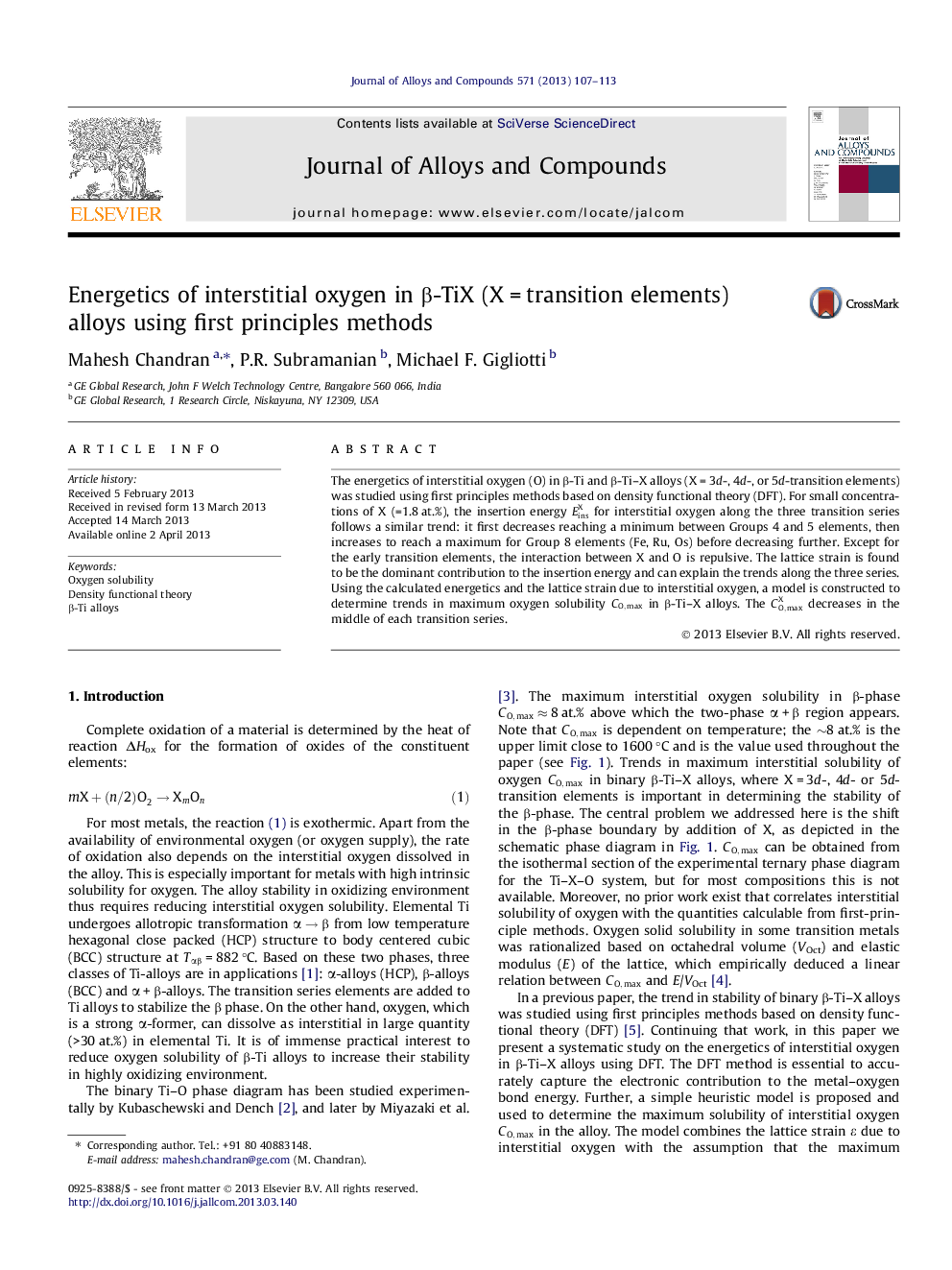| Article ID | Journal | Published Year | Pages | File Type |
|---|---|---|---|---|
| 1613871 | Journal of Alloys and Compounds | 2013 | 7 Pages |
•Trends in energetics of interstitial oxygen in β-Ti–X alloys are obtained using DFT-based first-principle calculations.•Model relating lattice stability to oxygen concentration is presented to find maximum oxygen solubility in an alloy.•It is shown that the parameters in the model can be obtained from first-principle calculations.•The model is used to find maximum oxygen solubility in binary β-Ti–X alloys across transition element series.
The energetics of interstitial oxygen (O) in β-Ti and β-Ti–X alloys (X = 3d-, 4d-, or 5d-transition elements) was studied using first principles methods based on density functional theory (DFT). For small concentrations of X (=1.8 at.%), the insertion energy EinsX for interstitial oxygen along the three transition series follows a similar trend: it first decreases reaching a minimum between Groups 4 and 5 elements, then increases to reach a maximum for Group 8 elements (Fe, Ru, Os) before decreasing further. Except for the early transition elements, the interaction between X and O is repulsive. The lattice strain is found to be the dominant contribution to the insertion energy and can explain the trends along the three series. Using the calculated energetics and the lattice strain due to interstitial oxygen, a model is constructed to determine trends in maximum oxygen solubility CO,maxCO,max in β-Ti–X alloys. The CO,maxX decreases in the middle of each transition series.
